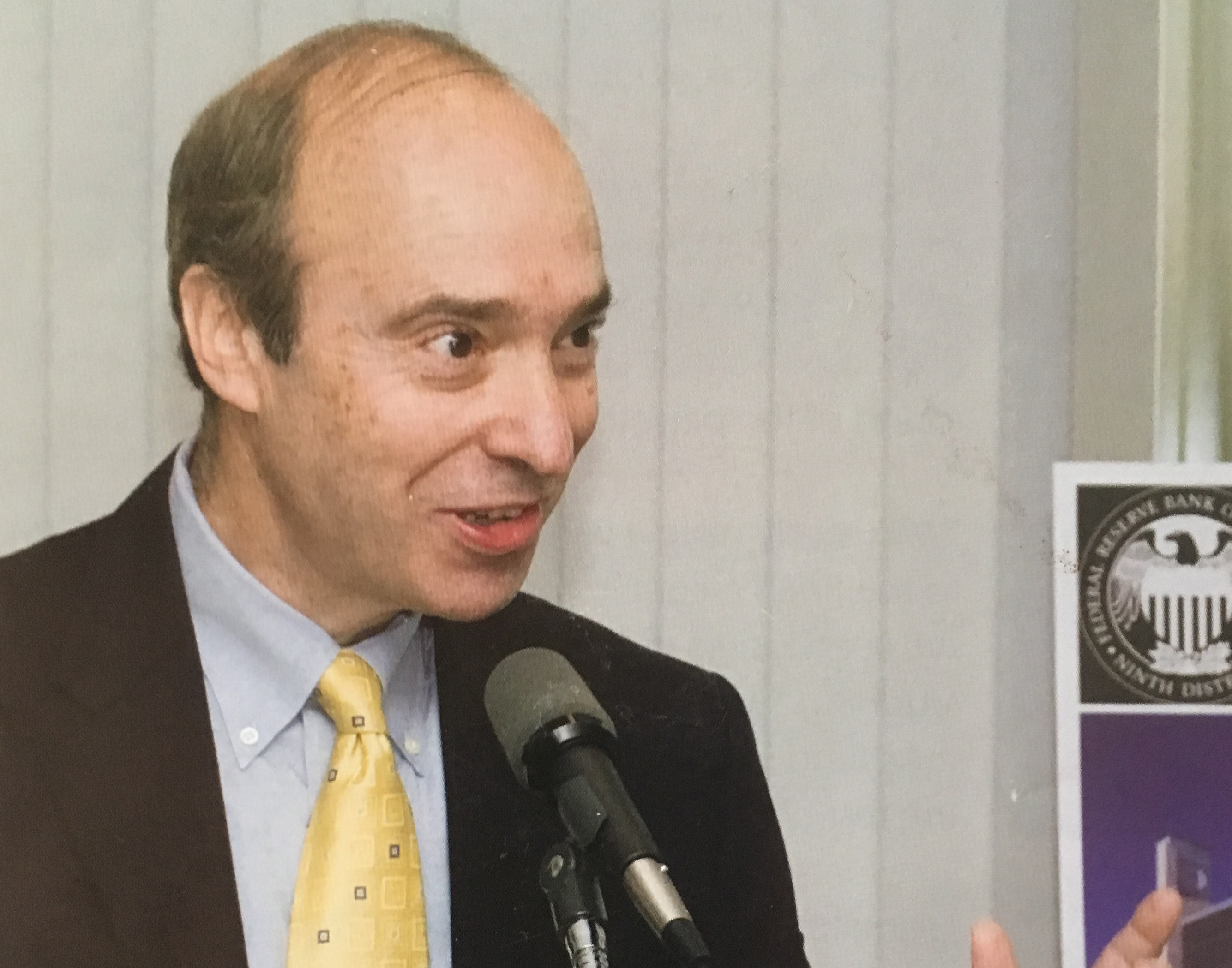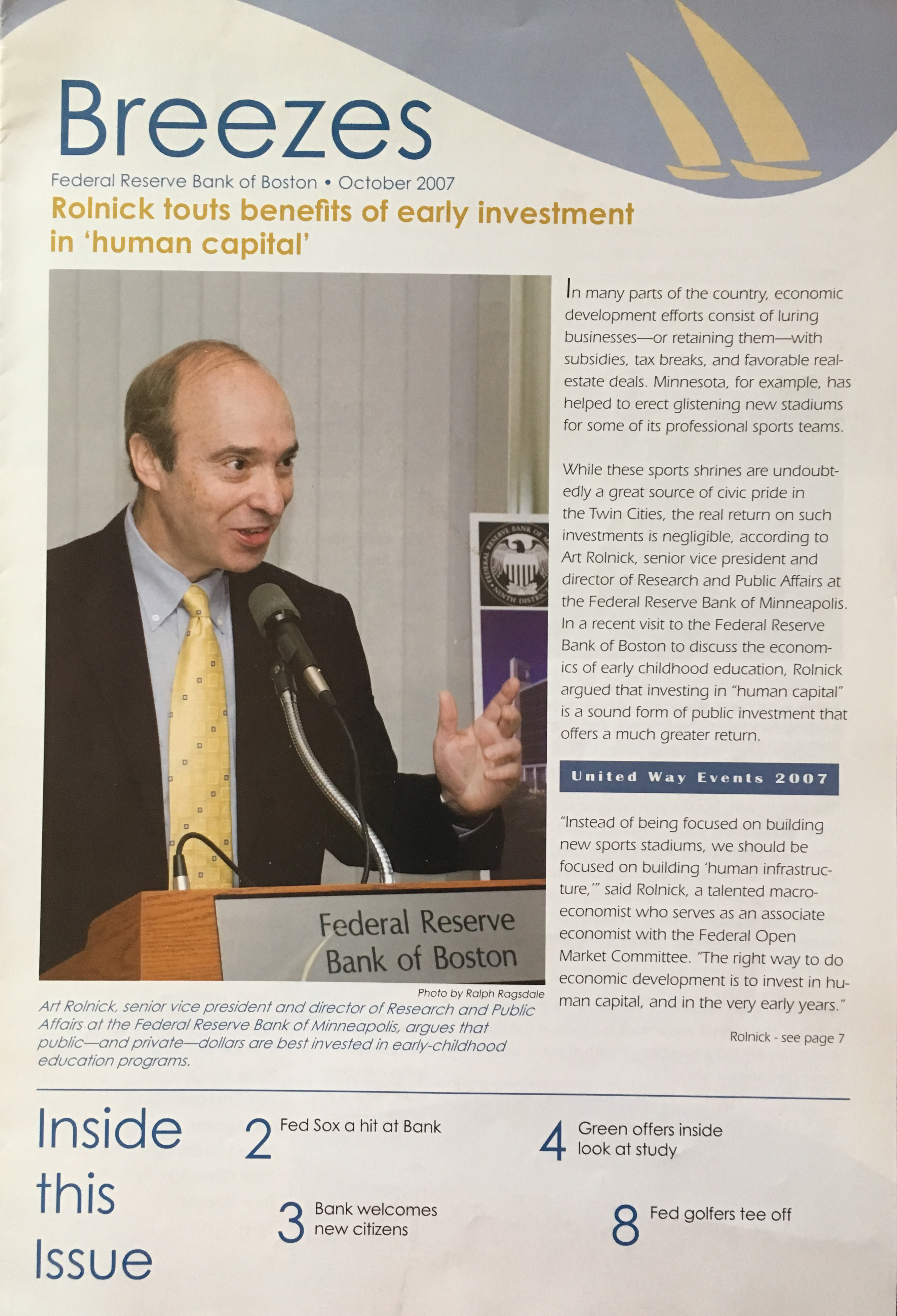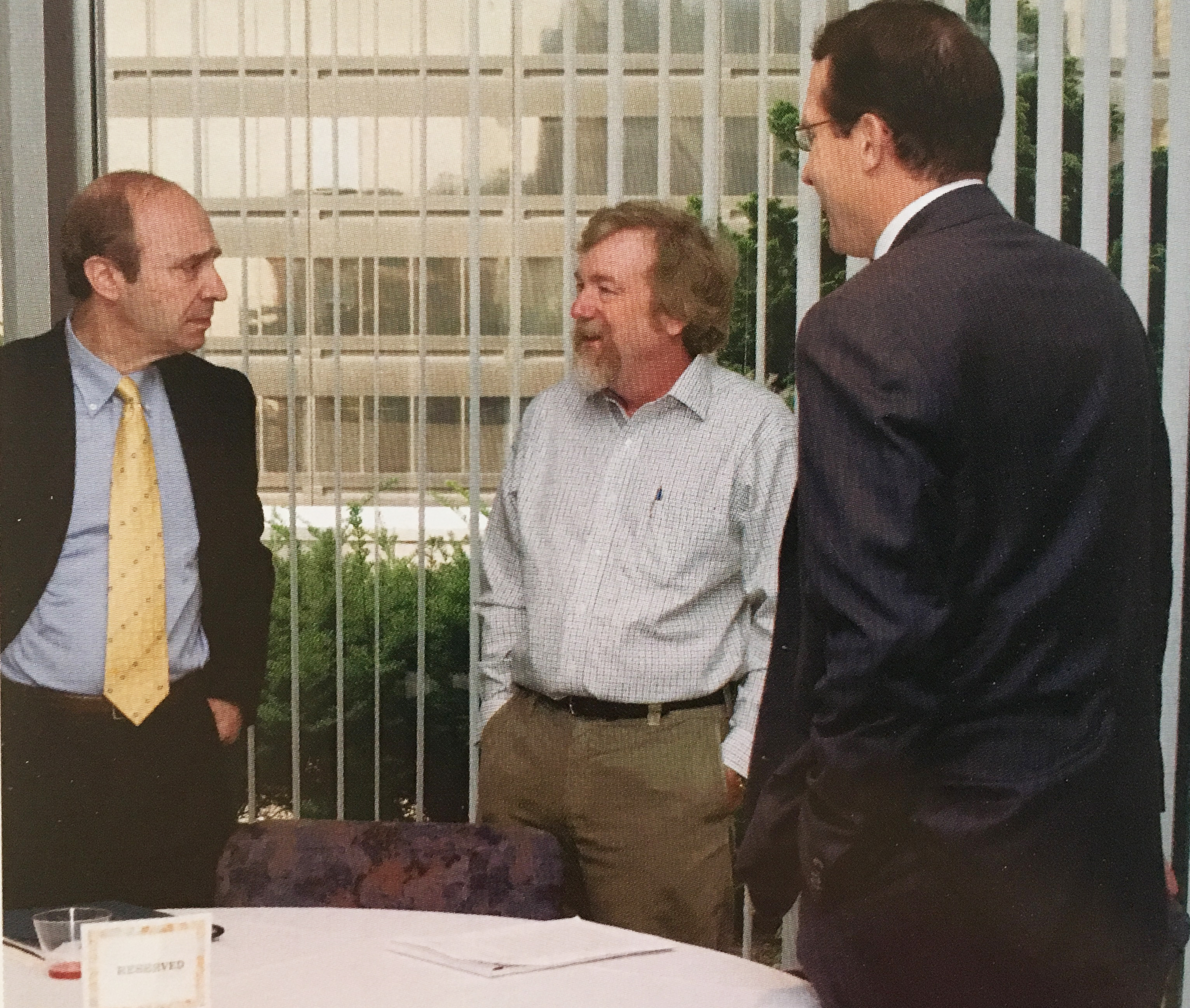
Rolnick Touts Benefits of Early Investment in ‘Human Capital’
From Breezes, the Federal Reserve Bank of Boston's Employee Newsletter
In many parts of the country, economic-development efforts consist of luring businesses -- or retaining them -- with subsidies, tax breaks and favorable real-estate deals. Minnesota state government, for example, has helped to erect glistening new stadiums for some of its professional sports teams.
While these sports shrines are undoubtedly a great source of civic pride in the Twin Cities, the real return on such investments is negligible, according to Art Rolnick, senior vice president and director of research and public affairs at the Federal Reserve Bank of Minneapolis.
In a recent visit to the Federal Reserve Bank of Boston to discuss the economics of early childhood education, Rolnick argued that investing in “human capital” is a sound form of public investment that offers a much greater return.

“Instead of being focused on building new sports stadiums, we should be focused on building ‘human infrastructure,’” said Rolnick, a talented macro-economist who serves as an associate economist with the Federal Open Market Committee. “The right way to do economic development is to invest in human capital, and in the very early years.”
Rolnick bases his case on studies that track the effects of high-quality early childhood education programs for at-risk families in various parts of the country. Together with Rob Grunewald, a Minneapolis Fed economic analyst, Rolnick paid particular attention to the High/Scopes Study of the Perry Preschool in Ypsilanti, Mich.
In the 1960s, the Perry Preschool offered a high-quality early childhood education program for three- and four-year-old children, combining classroom time and home visits by parent-focused mentors. The cost, in today’s dollars, was about $10,000 per student, per year.
After 10 years, the results were discouraging: The program students hadn’t done much better than the control group, which didn’t take part in the program. But subsequent results proved far more promising. Rolnick reviewed the 30-year data, and, as a result, “we had outcome data, and not just IQ scores,” said Rolnick.
“Kids who took part in the program were found to be much less likely to need special education or to be retained in the first grade," added Rolnick. "They were also much more likely to be literate by the sixth grade, graduate high school, get a job, pay taxes and stay off welfare. Oh, and the crime rate goes down 50 percent among these individuals.”
While the 30-year results were encouraging, Rolnick and Grunewald dug deeper, hoping to uncover an even greater economic rationale for public investment in early childhood education. “Adjusted for inflation, we came up with a 16 percent real rate of return,” said Rolnick. “This number not only beats almost any long-term return you can get in the market, but it also beats the return you get from conventional economic development.”
 Art Rolnick (left) speaks with Boston Fed executives.
Art Rolnick (left) speaks with Boston Fed executives.
Critics of the study countered that the sample size of the Perry Preschool Case (123 families) was too small to draw concrete conclusions. So Grunewald and Rolnick dug even deeper, unearthing several similar studies conducted in Chicago, New York City and North Carolina, for which they calculated real rates of return from 7 to 19 percent.
So as the evidence mounted and Rolnick won more converts to his cause, the next challenge was to find a way to “scale up” such small, local programs to have a citywide or statewide reach. “Our idea is simple,” said Rolnick. “We’ll offer scholarships.”
Through an endowed fund, Rolnick’s plan would offer annual scholarships of up to $13,000, based on need, to at-risk three- and four-year-old children so that they can attend a high-quality early education program. By having public-health nurses inform at-risk, pregnant mothers in the program -- and offer pre-natal training -- the program would ensure that every at-risk child has a chance to benefit from a quality early education. Once the family receives the scholarship money, parents would choose from a number of education vendors who have agreed to the terms of the outcome-based program.
“We’re not going to tell education providers how to run their business, but they have to produce results if they expect to get paid,” said Rolnick. “We’re going to pay, and pay very well, but our scholarship kids will have to pass a kindergarten-readiness test that gauges cognitive and social skills.”
To test his theory, Rolnick has helped to establish the Minnesota Early Learning Foundation, which is in the process of raising $30 million in private capital. The first pilot, which will involve about 1,200 families in St. Paul, will begin in January.
“We believe it’s obvious that high-quality early education programs provide a high public return,” noted Rolnick. “We’ll make sure that this pilot effort will be very transparent. The Stanford Research Institute will act as the outside evaluator, so you’ll know if we succeed or fail.”
Post a comment